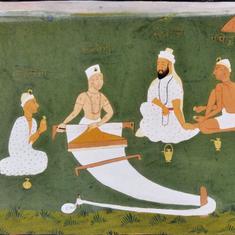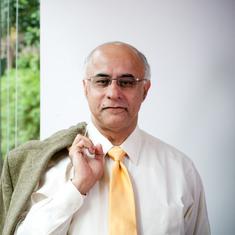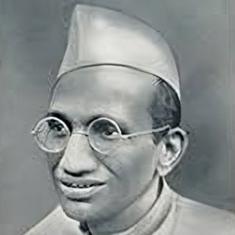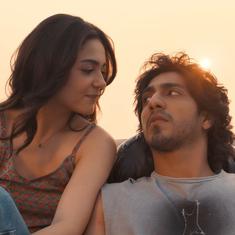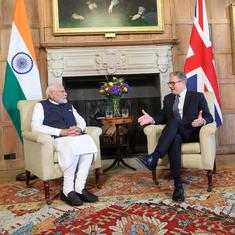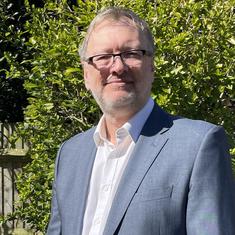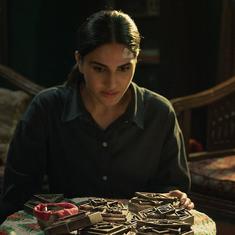What does it mean to teach the history of medieval India in our times? Working at an undergraduate college has helped me see just how complex this endeavour can be. When students come to the classroom, their understanding of Indian history is shaped primarily by what they have learned in school textbooks – but also by popular films and social media.
Their attitudes to medieval India often reveal how several faultlines in today’s India have developed.
Medieval India roughly corresponds to the period between the eighth century CE and the 18th century CE. It saw major changes in religion, political life, law, governance, food and everyday life. It is one of the most debated periods of Indian history, both by historians and among politicised citizens.
As someone new to teaching undergraduate students fresh out of school, my challenge is to introduce the idea that the period is more intricate and multi-layered than it is often made out to be.
The idea of “medieval India” is the outcome of history being classified into three periods (ancient and modern, being the others) by historians who uncritically adopted this categorisation from the scholars of European history.
I began the course by introducing what constitutes the “medieval” in India. The shift from the ancient to the early medieval was important, historians say, because land ownership became more complex: rulers granted tax-free land to Brahmins and religious institutions to legitimise their authority.
The period also saw the emergence of new regional cultures under various dynasties across the country, each developing distinct literary traditions, religious practices, art forms and political systems.
According to the syllabus, the course follows a chronological order. It starts with the Arab and Turkish invasions of the subcontinent between the eighth and 12th centuries, covering events up to the decline of the Mughals and the arrival of the European East India Companies in the 17th century.
This structure, however, does not always help students understand how complex the past is. I was keen on introducing history thematically, alerting students to the history of ideas by drawing their attention to how concepts such as justice, self and community take shape through the unique words, stories and ways of thinking found in India’s many language traditions.
To engage students with the long histories of inequality in South Asia and beyond, I try to include topics on social justice in my classes. Many of these disparities stretch back centuries, often taking new forms during the medieval period, shaped by changing regimes, caste hierarchies and religious orthodoxies.
I also encourage students to reflect on how colonial and Eurocentric narratives have moulded our understanding of India and its histories. The idea is not to reject European perspectives, but to treat them as one among the many sources of our thinking, starting from the Brahminical, Buddhist, Jain and Sufi traditions.
To illustrate the point, I introduced students to scholarship on classical music and how the Bhakti and Sufi mystical literary movements profoundly influenced the Carnatic and Hindustani traditions. We also explored how vachanas, a form of poetry that emerged in Karnakata in the 12th century CE, and other poetic forms from the past continue to shape our present. We can trace these literary influences even in contemporary rock bands.
Here, I witness a range of responses. Some students were curious about how ideas travelled along land and sea trade routes, while others were drawn to people’s everyday lives in medieval times, including systems of law and punishment.
They asked thoughtful questions: who owned the land in medieval times, and what was the status of peasants? How did the caste system shape land relations in India? And why is the medieval period so often viewed through the narrow lens of a Hindu-Muslim binary?
Buoyed by the enthusiasm, I assigned a project on medieval India and was delighted to see them sing vachanas, try out Sufi songs, play the veena and tabla, map trade routes and explore the lives of powerful women through autobiographical narratives centred on the 12th-century mystic poet Akka Mahadevi and the Mughal empress Noor Jahan.
Their approach combined archival research with interactive learning methods. One group created imaginary autobiographical diaries of Noor Jahan and staged a play on her assertive presence in a male-dominated Mughal court. By adding visual and performative elements to their work, they tried to subvert the historical silence of women’s voices.
Another set of students focused on trade, economy, and cultural exchange, situating their research within the context of Chickpete, a historic neighbourhood in Bengaluru. It began as an exploration of economic history but evolved into an ethnographic engagement with living traditions.
Students documented their encounters with shopkeepers, artisans, and caretakers of historical shrines. The market became a space of commerce, community, memory and intercultural dialogue.
In today’s artificial intelligence-driven world, their projects offered a powerful reminder that history thrives through narratives, human connection and field visits. These projects underscored how history can be meaningfully connected to the present. By moving beyond rote learning, the students could view the medieval period not as a relic of the past but as a dynamic and living part of the cultural fabric of South Asia.
My goal was to help the students gain an understanding of these complex histories and critically examine the various forms of power and control we witness today. To better understand and explain our own experiences, it is essential to understand how to analyse colonial structures of power and knowledge and explore alternative intellectual traditions from various regions and languages.
I know that most students are unlikely to revisit this historical period unless they pursue higher studies in history. Still, my effort has been to create a space where critical consciousness, aesthetic imagination and inner awakening can lead to meaningful and creative engagement with the past.
As the American author bell hooks notes, “The classroom, with all its limitations, remains a location of possibility.” Within this space, education can be an act of freedom – a collective labour of imagining and working toward more just futures.
Chanthu S teaches history at Manipal Academy of Higher Education, Bengaluru, and previously taught at Mount Carmel College (Autonomous), Bengaluru.

